Writer: Tiffany Whisner, Coles Marketing
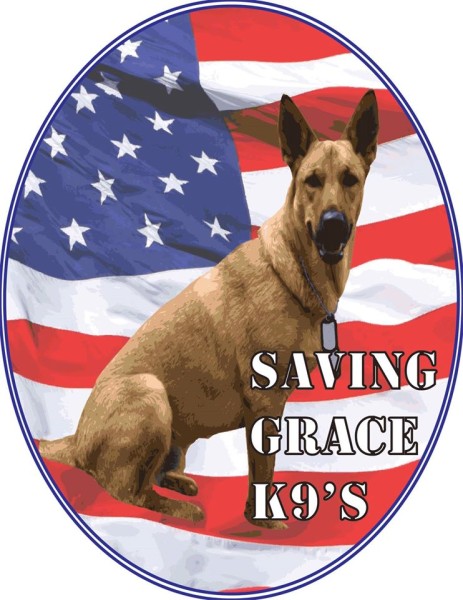 About 30 percent of men and women who have spent time in war zones experience post-traumatic stress disorder (PTSD); many of those veterans also suffer from depression. And approximately 7.6 million companion animals enter animal shelters nationwide each year.
About 30 percent of men and women who have spent time in war zones experience post-traumatic stress disorder (PTSD); many of those veterans also suffer from depression. And approximately 7.6 million companion animals enter animal shelters nationwide each year.
Why not bring veterans and furry friends together with a program that helps change those statistics for the better — and changes both lives in the process?
Saving Grace K9’s is doing just that — with the motto “Saving lives to save lives.”
“All dog lovers know how much the unconditional love of their dogs means to them,” said Director Brigette Parsons. “That love means so much more to the veterans. That unconditional love has saved many veterans from taking their own lives.”
From laws to paws
Saving Grace K9’s opened in September, headquartered in Lexington, N.C. But Parsons’s path to starting the nonprofit organization took her on an interesting journey.
She received her bachelor’s degree in psychology from the University of California, Santa Barbara, and then she went on to work as an insurance adjustor for 25 years.
“I was still helping people — something I have a passion for — but it was on a different level,” Parsons said. She realized something was missing, and her daughter Ella Grace helped her find that missing piece.
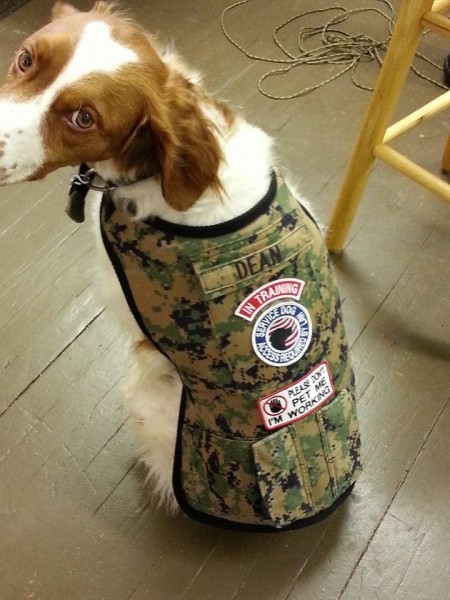 Ella Grace has Down syndrome, so Parsons is very much aware of and knowledgeable about working with people with disabilities and special needs, including the obstacles they have to face on a daily basis.
Ella Grace has Down syndrome, so Parsons is very much aware of and knowledgeable about working with people with disabilities and special needs, including the obstacles they have to face on a daily basis.
“I decided I wanted to go back to school to get my master’s degree in vocational rehab,” she said. She was studying to work with veterans and adults with special needs, and that’s when another fortunate fork in the road came.
“I was interviewing veterans for one of the projects I was working on, and I was asking them how vocational rehab services help them in their day-to-day activities and in their lives in general.” The answer was one Parsons wasn’t prepared for — that vocational rehab wasn’t really the route the veterans felt would help them most.
“So I asked them what they needed,” she said. “And they said — service dogs.”
A four-legged angel
Assistive technology includes both devices and services, and one of those services is service animals, according to the AAC-RERC. The Americans with Disabilities Act (ADA) defines a service animal as any guide dog (for visually-impaired and blind individuals), signal dog (for hearing-impaired or Deaf individuals), or other animal individually trained to provide assistance to an individual with a disability.
But how does that apply to veterans without a noticeable disability?
“Twenty-two veterans a day commit suicide,” Parsons said. “They are suffering from post-traumatic stress disorder and traumatic brain injuries, and they need help. For many of them, the current route through the VA isn’t working.”
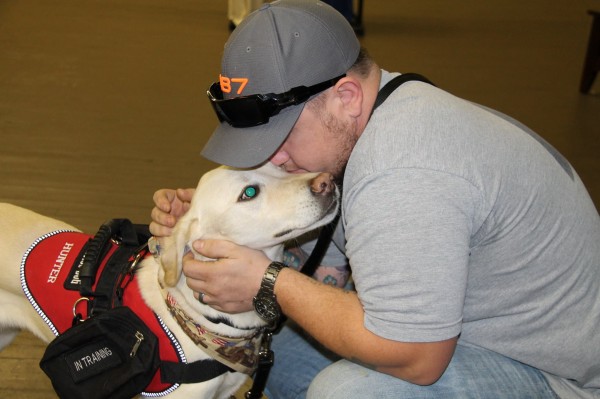 These veterans need alternate methods of treatment — anything from yoga to service dogs — other than drugs.
These veterans need alternate methods of treatment — anything from yoga to service dogs — other than drugs.
“The drugs they are on put them in a foggy haze, and they have trouble functioning in daily tasks,” Parsons said. “So they go off the drugs, but then they don’t trust people in large part because of what they’ve been through during their service. They don’t know where to turn.”
According to the National Institute of Mental Health, post-traumatic stress disorder (PTSD) causes people to feel stressed or frightened even when they’re not in danger. It develops after a terrifying ordeal, like war, that involved physical harm or the threat of physical harm. It can cause flashbacks and bad dreams, and people with PTSD may avoid certain places and have trouble sleeping, eating or concentrating.
Having PTSD might make these veterans prisoners in their own homes — and minds.
And a four-legged furry friend can be the answer. It is a well-known fact that dogs can help their human’s health. Benefits include a positive impact on both your mood and your health, from a healthier heart to a stress soother. But for veterans with PTSD, a dog can be a lifesaver.
Grace brings hope
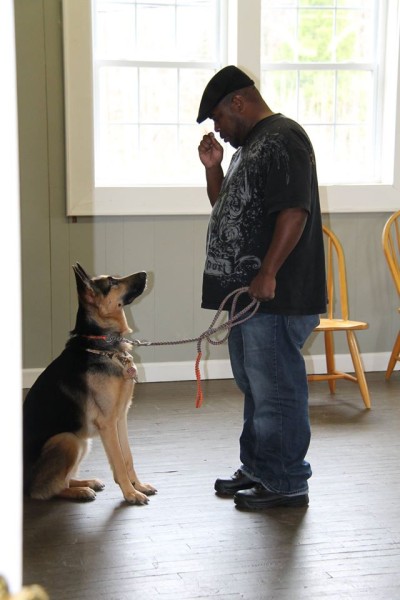 “Dogs can help people with PTSD in numerous ways,” Parsons said. “They can act as a block for the veteran who is hypervigilant when going out in public, and they can clear a room so veterans can feel safe going into their homes. They can even remind their humans to take medication, if necessary.”
“Dogs can help people with PTSD in numerous ways,” Parsons said. “They can act as a block for the veteran who is hypervigilant when going out in public, and they can clear a room so veterans can feel safe going into their homes. They can even remind their humans to take medication, if necessary.”
Parsons particularly wanted to focus on helping veterans because she feels they aren’t being taken care of like they should and, having family members in the military, she knows firsthand about their struggles.
“When you look in their eyes and you see their hope for being independent and feeling human again, there’s no way I could turn my back on that. We are free because of the men and women who serve and put their lives on the line for us. Just saying thanks isn’t enough — I wanted to do something more.”
And it began with the name — Saving Grace K9’s.
Parsons’s daughter is named Ella Grace, and “Saving Grace” has multiple meanings — saving the lives of both veterans from committing suicide and the rescue dogs from being put down.
She soon learned she could help save these veterans and rescue dogs at the same time when she met certified dog trainer Kat Carter during a random stop at a local tractor supply store. Or was it random?
“Until I met Kat, I was trying to run the organization and do all the training myself,” Parsons said. “But when we met, we instantly knew we had a connection. We started talking, and Kat said her husband was a marine and also has PTSD. I told her about my ideas for the program, and she knew it was something she wanted to be involved in.”
Having trained dogs for more than a decade, Carter was the perfect fit and answer for Saving Grace K9’s. After going through the process of getting of the new nonprofit organization approved, it was time to start training.
Loved ones with tails
Saving Grace K9’s primarily uses rescue dogs that are trained to be service dogs.
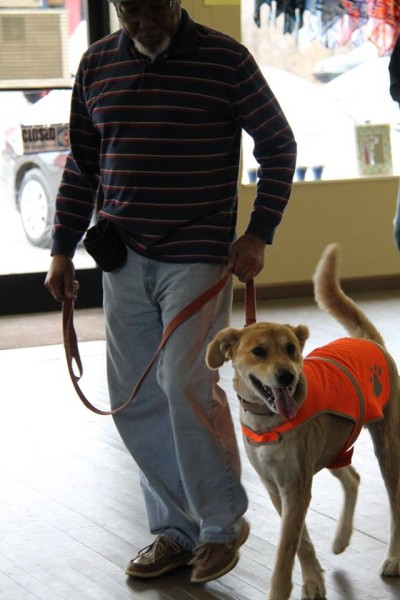 Each dog is trained in tandem with the veteran handler so they are able to bond during the basic training, extensive public access training and specific assistive training. Each dog is trained specifically for each veteran’s needs.
Each dog is trained in tandem with the veteran handler so they are able to bond during the basic training, extensive public access training and specific assistive training. Each dog is trained specifically for each veteran’s needs.
“These dogs are trained as psychiatric service dogs, which are not recognized by the VA,” Parsons said. “The VA only recognizes and pays for mobility service dogs, so, unfortunately, our whole program is run by donations alone.” And the program is at no cost to the veterans.
Another special highlight is that if the veteran already has a dog they are bonded with, that dog can be considered for the program as well.
“We are one of the only organizations allowing people to keep and train their own dogs,” she said. “First we do a temperament test, just to make sure they are able to be trained. They do several weeks of basic obedience training, and then they can start in with the tasks and public access training.”
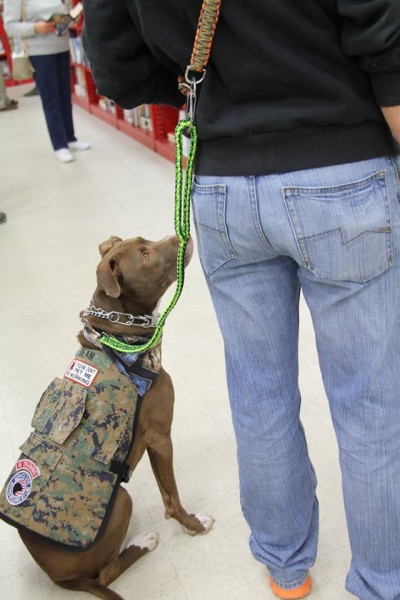 And if the veteran doesn’t have a dog, Parsons talks with him/her to find out about needs and if there are certain ability issues. A rescue dog is trained specially for that veteran.
And if the veteran doesn’t have a dog, Parsons talks with him/her to find out about needs and if there are certain ability issues. A rescue dog is trained specially for that veteran.
The training program runs about 16-20 weeks, so the veterans who began their training when the organization opened in September are getting ready to graduate. And there are more than a dozen other veterans who are currently at different levels of training in the program.
Each veteran trains with their dog once a week at the training center and then goes home to practice. And the only requirement is the veteran has been diagnosed with PTSD or a traumatic brain injury.
“Some of the vets in our program served in Vietnam, so they’ve been dealing with PTSD for decades,” Parsons said. “It never goes away. And they are finally getting some peace and relief from just a few months at Saving Grace.”
A new leash on life
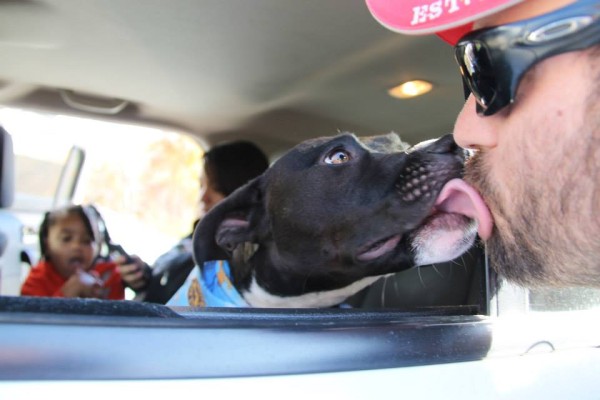 So far, the feedback has been extremely positive. One of the veterans, James, is at the training center every day.
So far, the feedback has been extremely positive. One of the veterans, James, is at the training center every day.
“I’m a lot calmer now than what I was,” he said. “I can go out in public without feeling overwhelmed.” After more than nine years of service, he just got out of the Marine Corps in September.
Finding Saving Grace K9’s was … a saving grace. And having his own dogs by his side meant the world to him.
“I already had the bond with my dogs,” James said. “They were already in tune with me and how I reacted to certain things and when I would get upset.”
“Saving Grace K9’s has changed my life, without having the fear of constant anxiety attacks or even worse,” he said. “I’ve become more independent, and I can do what I need to do on a daily basis — it’s a newly-found life for me.” Parsons has noticed the difference.
“This is my reward,” said Parsons, who works strictly as a volunteer due to lack of funding. “Working with James from September until now — he’s a completely different person.” James has been serving as mentor and helper for other veterans in the program.
“He’s been an awesome liaison for the program,” Parsons said. “The other vets look to him for guidance because he’s been where they’ve been. He knows what they are going through. He has found the passion for this program just like me, and he wants to help his brothers and sisters.”
Helping our heroes
Parsons is hoping to expand the program to other areas, but it’s in the infant stages right now.
“We de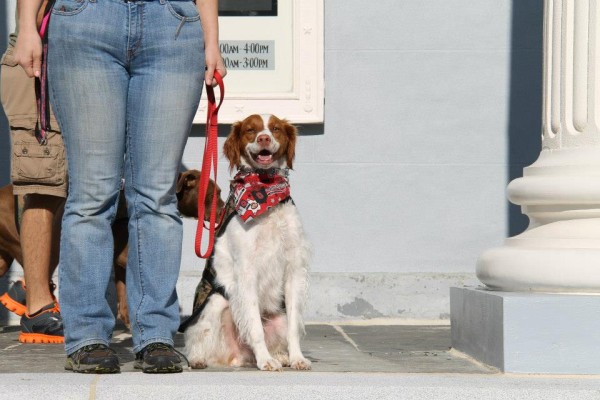 finitely want to grow and add more people to the staff,” she said. “We are mostly working from personal donations, so we are in need of corporate donations as well. All the money goes directly into the program. We really hope businesses and people in the community and beyond see what an important program this is for veterans.”
finitely want to grow and add more people to the staff,” she said. “We are mostly working from personal donations, so we are in need of corporate donations as well. All the money goes directly into the program. We really hope businesses and people in the community and beyond see what an important program this is for veterans.”
Donations to Saving Grace K9’s are welcome at the center located at 1121 S. Main St. in Lexington, N.C. The organization depends solely on donations and grants, and none of that cost is passed on to the veterans.
Currently, they are remodeling the basement of the training facility, and they have a recreation area for the veterans to socialize with others and gain some comradery. Parsons wants to eventually create an outreach facility where vets can stay if they don’t live close to the training center.
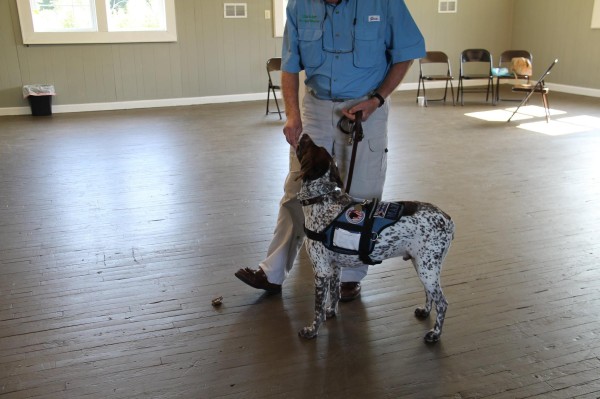 “I do the people thing, and Kat does the dog thing,” Parsons laughed. “James or I talk to them about their needs and then are present in most of the training classes. We keep the classes small, to just one or two veterans and their dogs, to keep the training specialized and allow for one-on-one work.”
“I do the people thing, and Kat does the dog thing,” Parsons laughed. “James or I talk to them about their needs and then are present in most of the training classes. We keep the classes small, to just one or two veterans and their dogs, to keep the training specialized and allow for one-on-one work.”
Most breeds are open to the training, Parsons said. The dog needs to have an even temperament, but so far she hasn’t seen any breeds that haven’t done well in the training program.
“These dogs are making an impact,” she said. “And I think they know it.”
Always ready, always faithful
It might be hard to see these fun-loving, huggable, licking creatures as assistive technology, but Parsons absolutely agrees they are.
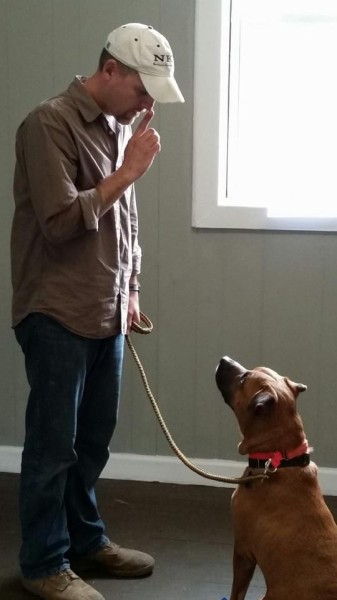 “They are breeding, eating, pooping machines — but they are still considered property, and they still have a job to do. Their job is to help their handler,” she said. That’s the reason people are discouraged from petting them in public. They are working animals, and they are doing a job that many people don’t see or don’t understand.
“They are breeding, eating, pooping machines — but they are still considered property, and they still have a job to do. Their job is to help their handler,” she said. That’s the reason people are discouraged from petting them in public. They are working animals, and they are doing a job that many people don’t see or don’t understand.
“I know a lot of people — many of them business people — who aren’t aware that service dogs can be anything other than ‘seeing eye dogs,’ and that’s sad,” Parsons said. She told the story about a veteran and his service dog who were kicked out of a restaurant because the veteran wasn’t blind and the dog wasn’t a guide dog.
“Society really needs to be educated about service dogs,” she said. “Yes, there are people who abuse the system, but there are many more people who need these life-saving service dogs and are not being allowed to have them in public.”
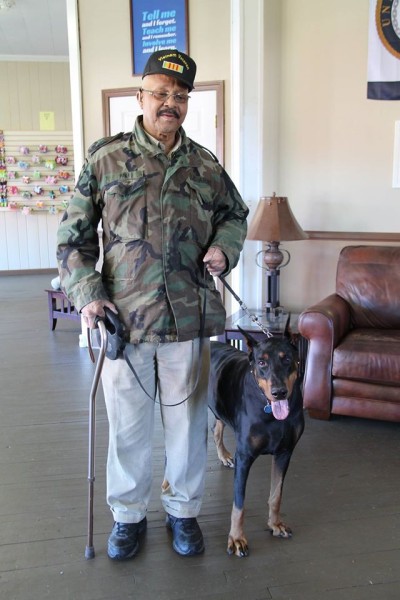 Each rescue animal provides assistance to its veteran handler, but they do much more than that.
Each rescue animal provides assistance to its veteran handler, but they do much more than that.
“They provide love, comfort and support,” Parsons said. “Without a four-legged animal, you’re missing out on a huge facet of life and what they can bring to it. And you’re also missing out on what you can do for the animal.”
Parsons said she has rescued many dogs — and she knows they know.
“A rescue animal knows you are saving their life,” she said. “And they want to help save yours.”
